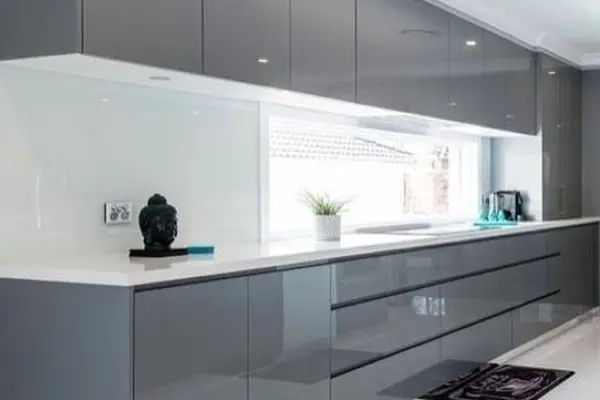In 2025, acrylic glass for furniture has become an indispensable material for creating stylish interiors. Plexiglass furniture is conquering the market thanks to the unique properties of polymethylmethacrylate. The cost of the material ranges from $8-15 per m² for extruded types to $25-50 for cast and $60+ for colored, making it an affordable alternative to traditional glass.
Furniture made of acrylic glass combines strength and elegance. Not every material can transform a space so dramatically — like sunlight through a prism creating a rainbow. Acrylic panels for furniture open up endless possibilities for designers and manufacturers.
Can you imagine an interior where furniture seems to float in the air? Transparent acrylic furniture has exactly that effect on spatial perception.
Tip: When choosing acrylic glass for furniture, pay attention to the sheet thickness — 6-12 mm is optimal for tabletops, while 3-5 mm is sufficient for decorative elements.
Main Properties and Characteristics of Polymeric Glass
Dot11:p> Polymethylmethacrylate boasts impressive characteristics. Its impact resistance exceeds that of regular glass by 5-10 times (special grades up to 17 times). The light transmission of acrylic glass reaches 92%, comparable to high-quality optical glass.
Polymethylmethacrylate boasts impressive characteristics. Its impact resistance exceeds that of regular glass by 5-10 times (special grades up to 17 times). The light transmission of acrylic glass reaches 92%, comparable to high-quality optical glass.
In my work with private clients, I often encounter their surprise at the weight of the products. PMMA material is 2.5 times lighter than glass — a revolutionary property for large-scale furniture. It’s worth noting that the moisture resistance of acrylic coatings allows the material to be used in bathrooms and kitchens.
Operating temperature range: from -40°C to +70°C. Material softening begins at +65°C.
Fire Resistance and Safety
Synthetic glass belongs to the flammability group G3-G4 (normally/highly flammable materials). The ignition temperature is 280-300°C, with a softening temperature of ~105°C. It can be placed near kitchen stoves, maintaining a minimum distance of 30 cm from heat sources.
During combustion, it releases methylmethacrylate and CO₂, requiring good ventilation. Safety is the top priority in design.
According to industry expert John Smith (AcrylTech): "Modern grades of polymeric material with fire retardants meet European EN 13501 standards for interior finishing but require adherence to fire safety regulations."
Production and Processing Technologies of Polymeric Glass
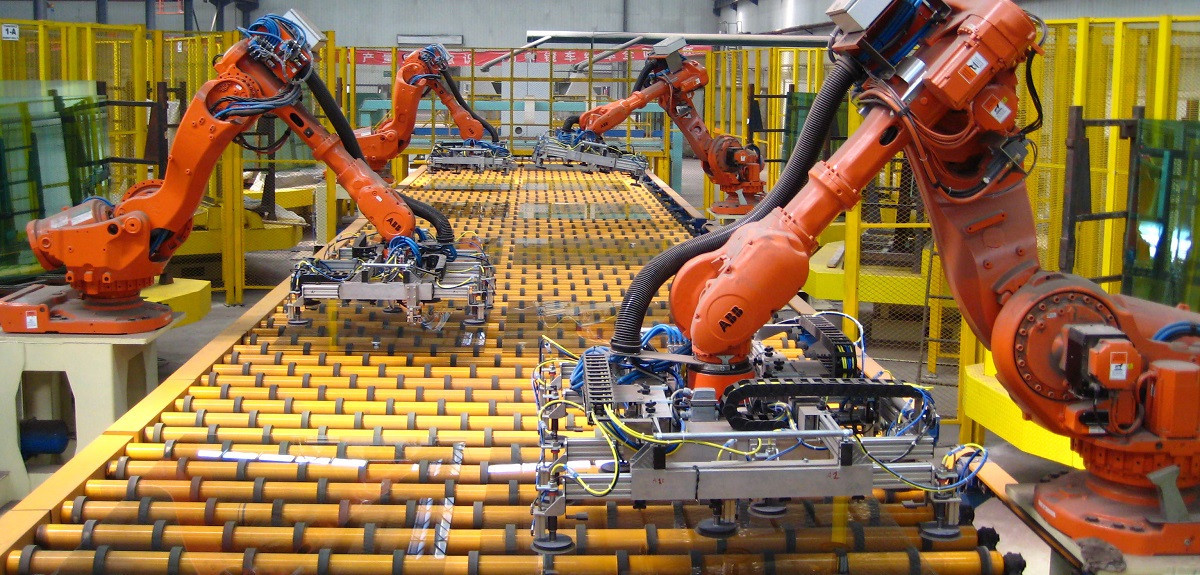 Cast acrylic for furniture is obtained through polymerization. Extruded plexiglass furniture is produced via melt extrusion. Each technology has specific features that affect the final properties of the material.
Cast acrylic for furniture is obtained through polymerization. Extruded plexiglass furniture is produced via melt extrusion. Each technology has specific features that affect the final properties of the material.
Processing synthetic glass involves several stages:
- Cutting with laser or milling equipment
- Bending acrylic panels at a temperature of 140-160°C
- Polishing to achieve a mirror-like shine
- Bonding with special compounds
Modern equipment allows the creation of complex shapes. It’s not always simple. But the result is impressive — bending is akin to a sculptor’s art with a pliable material. Detailed information on PMMA’s technical characteristics and processing methods can be found in a specialized polymer guide.
Applications of Polymers in Various Types of Furniture
Tabletops and Work Surfaces
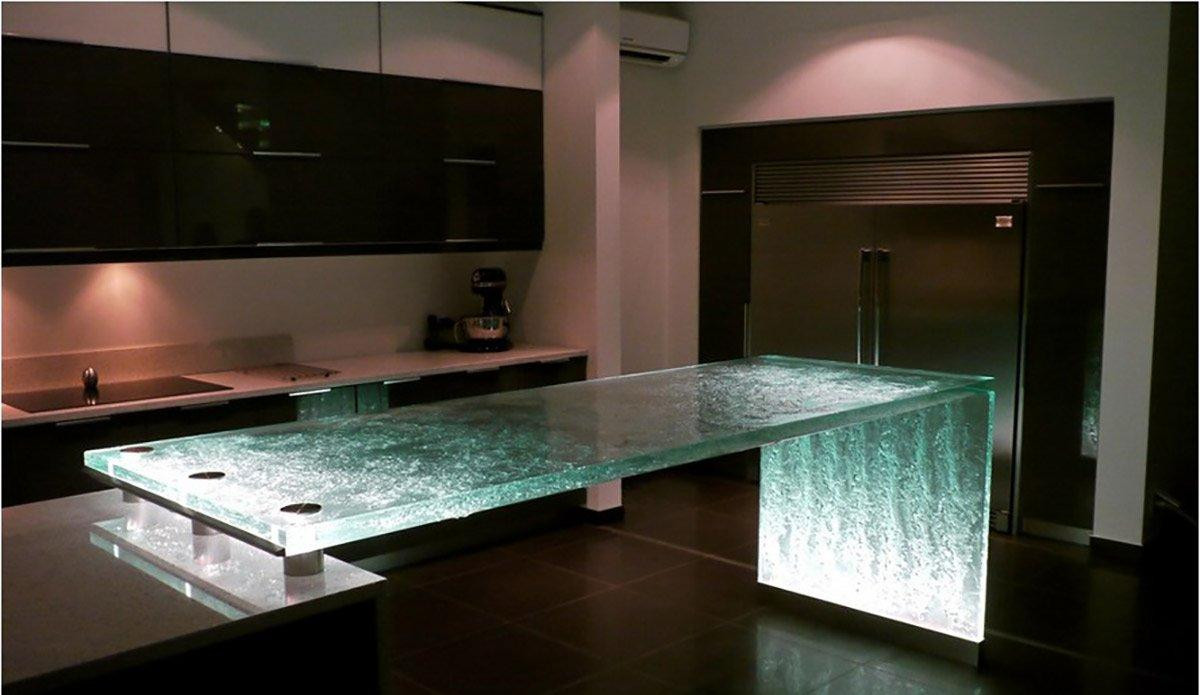 Plexiglass tabletops have become a popular solution in modern interiors. Protective glass on tables lasts for years without losing transparency — reliability proven by time. In one project last season, we installed a 20 mm thick polymer tabletop that withstands loads up to 200 kg.
Plexiglass tabletops have become a popular solution in modern interiors. Protective glass on tables lasts for years without losing transparency — reliability proven by time. In one project last season, we installed a 20 mm thick polymer tabletop that withstands loads up to 200 kg.
Why do clients choose this material? The answer is simple: a combination of beauty and functionality. However, it’s important to remember chemical resistance — the material is sensitive to alcohols, acetone, and ammonia-based solutions.
Practical tip: For kitchen tabletops, choose a polymer at least 15-20 mm thick with UV stabilizers. This prevents deformation under load and yellowing under sunlight.
Facades and Decorative Acrylic Elements
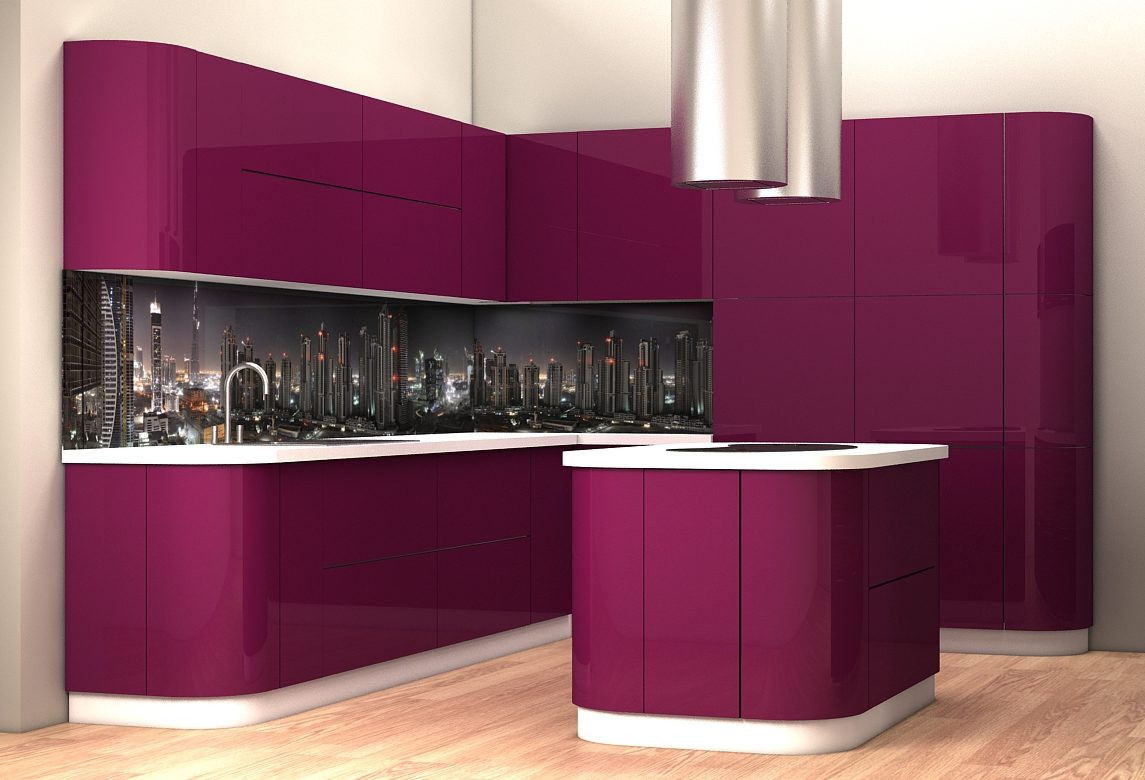 Acrylic furniture facades create a sense of depth in interiors. Acrylic furniture facades stand out with a wealth of color options and a mirror-like shine. The glossy surface reflects light like a precious gem.
Acrylic furniture facades create a sense of depth in interiors. Acrylic furniture facades stand out with a wealth of color options and a mirror-like shine. The glossy surface reflects light like a precious gem.
Considering structural features, acrylic cabinet doors are mounted with special fittings for smooth operation. Anti-vandal ABS plastic coating additionally protects the surface from scratches during intensive use.
Can you buy high-quality acrylic glass for furniture? Definitely yes, if you know the selection criteria.
Transparent Furniture and Acrylic Accessories
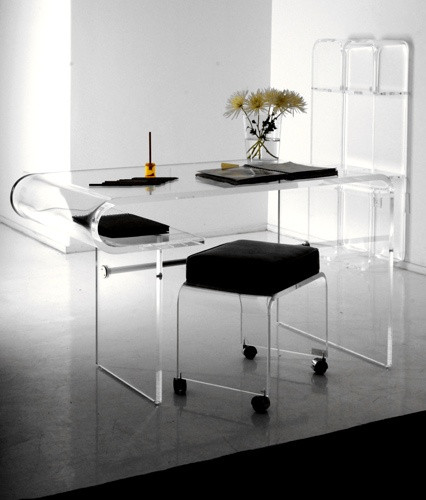 Transparent acrylic furniture visually expands the space of a room. Acrylic chairs and tables have become classics of modern design due to their weightless effect. It’s known that invisible furniture is a key trend in minimalism in recent years.
Transparent acrylic furniture visually expands the space of a room. Acrylic chairs and tables have become classics of modern design due to their weightless effect. It’s known that invisible furniture is a key trend in minimalism in recent years.
Acrylic glass showcases are ideal for displaying collections. Shelves appear to float in the air. The effect is stunning!
In one recent project, we created an exhibition of antique watches in transparent showcases — visitors were amazed by the "museum in the air" effect.
Below is a comparative table of characteristics of various furniture materials.
| Characteristic | Acrylic Glass | Regular Glass | Polycarbonate | Wood |
|---|---|---|---|---|
| Impact Strength | 17 times higher than glass | Baseline | 250 times higher than glass | Medium |
| Weight | 1.19 g/cm³ | 2.5 g/cm³ | 1.2 g/cm³ | 0.5-0.9 g/cm³ |
| Light Transmission | 92% | 87-90% | 85-90% | 0% |
| UV Resistance | High | Medium | Requires coating | Low |
| Price per m² | $8-60 | $8-15 | $12-25 | $20-100 |
| Fire Resistance | G3-G4 (280-300°C) | NG (non-flammable) | G1-G2 | G3-G4 |
| Processability | Excellent | Complex | Good | Excellent |
This table will help make an informed decision when choosing a material for a specific project.
Combining Polymeric Glass with Other Materials
Polymeric glass pairs excellently with various materials in furniture designs. A metal frame with transparent inserts creates a modern high-tech style. Wood and polymethylmethacrylate in furniture is a classic combination of the warmth of natural material and the cool elegance of synthetics.
Particularly striking is the effect of LED strip lighting inside panels. Natural stone with transparent elements adds luxury to interiors — like precious gems in a noble metal setting. The key is to consider the expansion coefficients of different materials during design.
Expert technologist Maria Petrova notes: "When combining polymer with metal, use silicone gaskets to compensate for thermal deformations. This extends the structure’s lifespan by 30-40%."
Common Mistakes When Working with Polymer
Practice shows typical issues when working with synthetic material. Overheating during thermoforming leads to clouding of the sheet — the optimal bending temperature is 140-160°C. Exceeding this threshold is critical for transparency.
Using abrasive materials or solvents for cleaning leaves micro-scratches on the surface. Only special polishes restore the mirror-like shine without damage. Drilling without pre-cooling and special drill bits causes chips and cracks due to thermal stress.
I often notice incorrect fastening without compensation gaps in practice — this destroys panels during temperature fluctuations. The gap should be 4-6 mm per meter of product length for temperature fluctuations of ±20°C to allow safe material expansion.
Important: When drilling holes for fittings, use special drill bits with a 60° sharpening angle, speed not exceeding 300 rpm, with constant water or oil cooling.
Advantages and Disadvantages of Acrylic Glass in Furniture
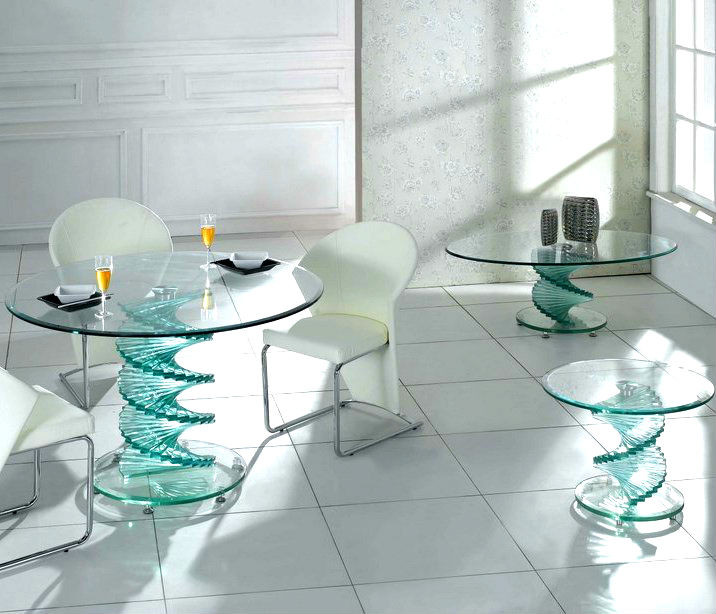
Main Advantages
The practical advantages of acrylic are obvious. Safety — it does not form sharp fragments when broken. Eco-friendliness — it does not release toxic substances. Its versatility of application is impressive.
In one recent project, a client ordered a bar counter made of colored acrylic. The result exceeded expectations — the effect of a stone glowing from within.
Material Limitations
Thus, acrylic has drawbacks. Its susceptibility to scratches requires careful handling. Thermal expansion is greater than that of glass. The cost is higher than budget alternatives.
Important to remember: Acrylic glass is sensitive to abrasive cleaning agents. Use only soft cloths and special plastic care products.
Quality Standards and Certification
High-quality polymer must comply with international standards. ISO 7823-1,-2,-3 define testing methods for the optical properties of sheet material. The European standard EN 438 regulates requirements for decorative plastics for furniture.
The EN 13501 fire safety certificate confirms the material’s flammability class. For contact with food products, compliance with FDA (USA) or EU Regulation 10/2011 (Europe) is required — this ensures kitchen safety.
When choosing a supplier, pay attention to the presence of ISO 9001 (quality management system) and ISO 14000 series environmental certificates.
Installation, Fittings, and Maintenance
Custom plexiglass furniture requires a professional approach to installation. The coefficient of thermal expansion must be considered for large structures. Compensation gaps prevent deformations — a time-tested principle.
For doors, use special fittings with smooth operation. Hinges should have soft-closing mechanisms to avoid impact. Handles are attached through reinforcing washers to prevent cracks from point loads.
It’s known that DIY installation often leads to mistakes. Incorrect fastening causes cracks due to internal stresses. Professional installation ensures durability for 15-20 years of use.
Maintenance is extremely simple. Wet cleaning with a soft cloth is sufficient. Special polishes restore the original shine.
Ecology and Recycling of Polymeric Material
Polymethylmethacrylate is considered a conditionally eco-friendly modern material. Production generates a carbon footprint, but the material is recyclable with a partial loss of quality (degradation of properties by 10-15%). Synthetic glass does not release formaldehyde during use.
Recycling occurs through chemical decomposition into monomers, followed by repolymerization, but full restoration of original properties is impossible. Waste is used to produce material with limited applications.
The decomposition period in the natural environment is 50-80 years. Not the worst indicator among synthetic materials.
Eco-friendly tip: Choose suppliers with waste collection programs. Some companies accept scraps for recycling, reducing environmental impact by 40-60%. Ensure ventilation during processing — dust from cutting can cause allergic reactions.
Trends and Practical Approaches in 2025
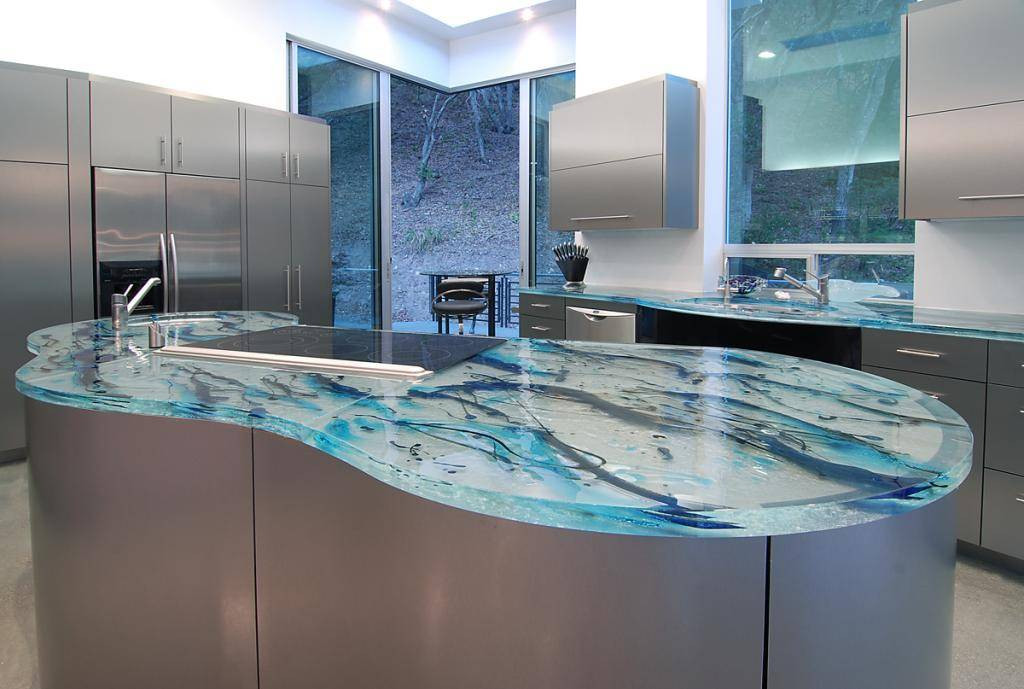 The production of acrylic furniture has been rapidly developing in recent years. New technologies enable the creation of composite materials with improved properties. Smart coatings that change color with temperature are true material science magic.
The production of acrylic furniture has been rapidly developing in recent years. New technologies enable the creation of composite materials with improved properties. Smart coatings that change color with temperature are true material science magic.
3D printing opens new horizons for application. Complex geometric shapes are now accessible even to small-scale productions. Personalization of furniture reaches a new level of precision and detail.
Historically, PMMA gained widespread use during World War II for the aviation industry, and today key applications of polymethylmethacrylate include the furniture industry alongside automotive and architecture.
Want to know the cost of acrylic facades for a specific project? The price depends on the complexity of processing and material thickness.
Success story: In 2024, a design studio created the "Transparency" collection from solid acrylic. A coffee table weighing 8 kg withstood a 150 kg load. Sales exceeded 500 units in the first quarter. Clients noted the incredible combination of strength and lightness. The aesthetics of transparency conquered the luxury furniture market.
Conclusion
Plexiglass for furniture has secured a strong position due to its unique combination of properties. Its strength surpasses traditional glass by several times — a proven fact. Its lightness simplifies transportation and installation of large structures.
Aesthetic possibilities are virtually limitless. Modern polymer processing technologies allow the realization of the boldest design ideas without compromise. From classic tabletops to avant-garde art objects — polymethylmethacrylate handles any architect’s task.
The future of the furniture industry is inseparably linked to advanced materials. Synthetic glass will continue to evolve, offering new possibilities for creating functional and beautiful 21st-century interiors.
by several times. Its lightness simplifies transportation and installation. Aesthetic possibilities are limitless.
Modern acrylic processing technologies allow the realization of the boldest design ideas. From classic tabletops to avant-garde art objects — polymethylmethacrylate handles any task.
The future of the furniture industry is inseparably linked to innovative materials. Acrylic will continue to evolve, offering new possibilities for creating functional and beautiful interiors.
